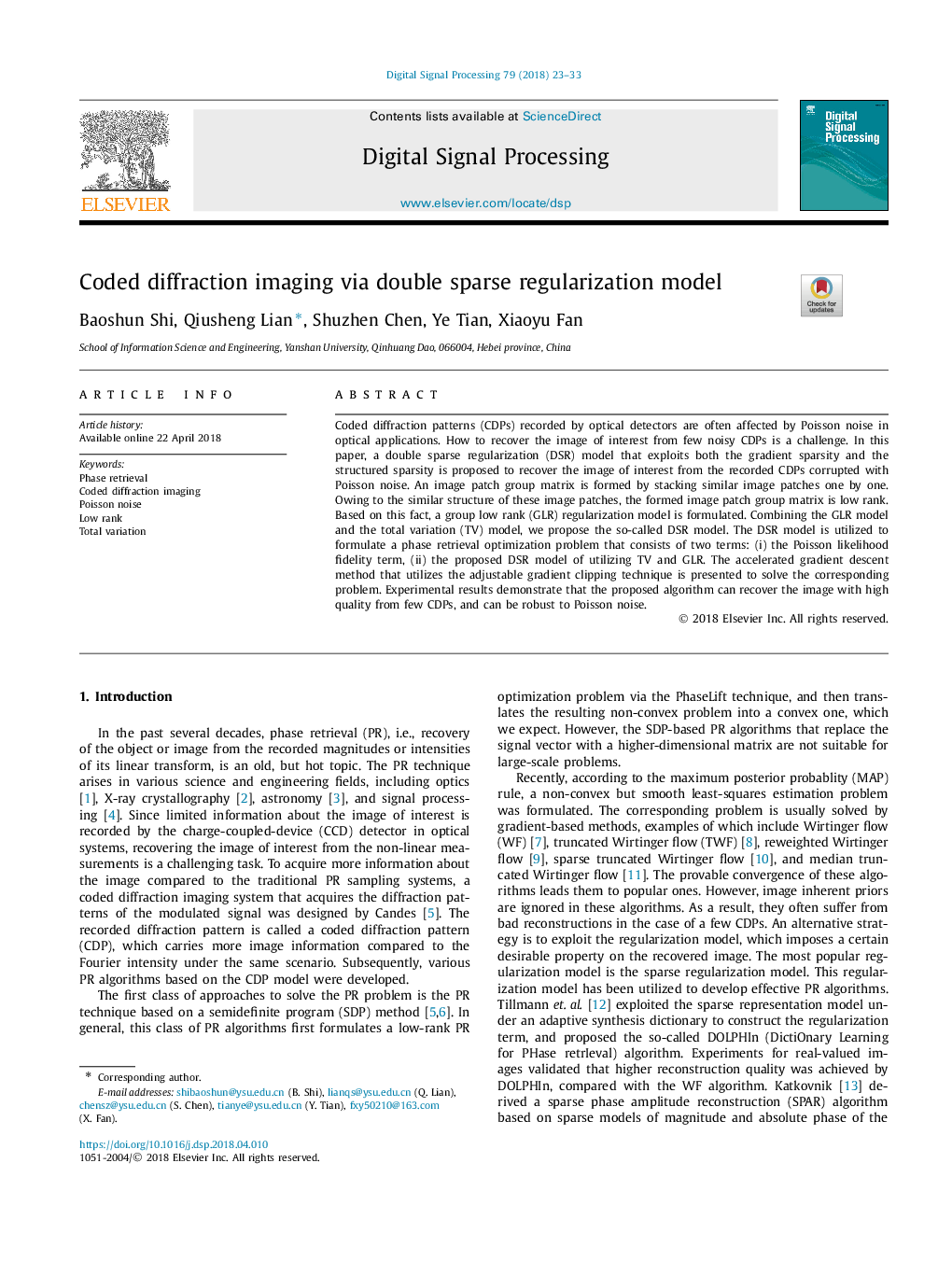| Article ID | Journal | Published Year | Pages | File Type |
|---|---|---|---|---|
| 6951668 | Digital Signal Processing | 2018 | 11 Pages |
Abstract
Coded diffraction patterns (CDPs) recorded by optical detectors are often affected by Poisson noise in optical applications. How to recover the image of interest from few noisy CDPs is a challenge. In this paper, a double sparse regularization (DSR) model that exploits both the gradient sparsity and the structured sparsity is proposed to recover the image of interest from the recorded CDPs corrupted with Poisson noise. An image patch group matrix is formed by stacking similar image patches one by one. Owing to the similar structure of these image patches, the formed image patch group matrix is low rank. Based on this fact, a group low rank (GLR) regularization model is formulated. Combining the GLR model and the total variation (TV) model, we propose the so-called DSR model. The DSR model is utilized to formulate a phase retrieval optimization problem that consists of two terms: (i) the Poisson likelihood fidelity term, (ii) the proposed DSR model of utilizing TV and GLR. The accelerated gradient descent method that utilizes the adjustable gradient clipping technique is presented to solve the corresponding problem. Experimental results demonstrate that the proposed algorithm can recover the image with high quality from few CDPs, and can be robust to Poisson noise.
Related Topics
Physical Sciences and Engineering
Computer Science
Signal Processing
Authors
Baoshun Shi, Qiusheng Lian, Shuzhen Chen, Ye Tian, Xiaoyu Fan,
